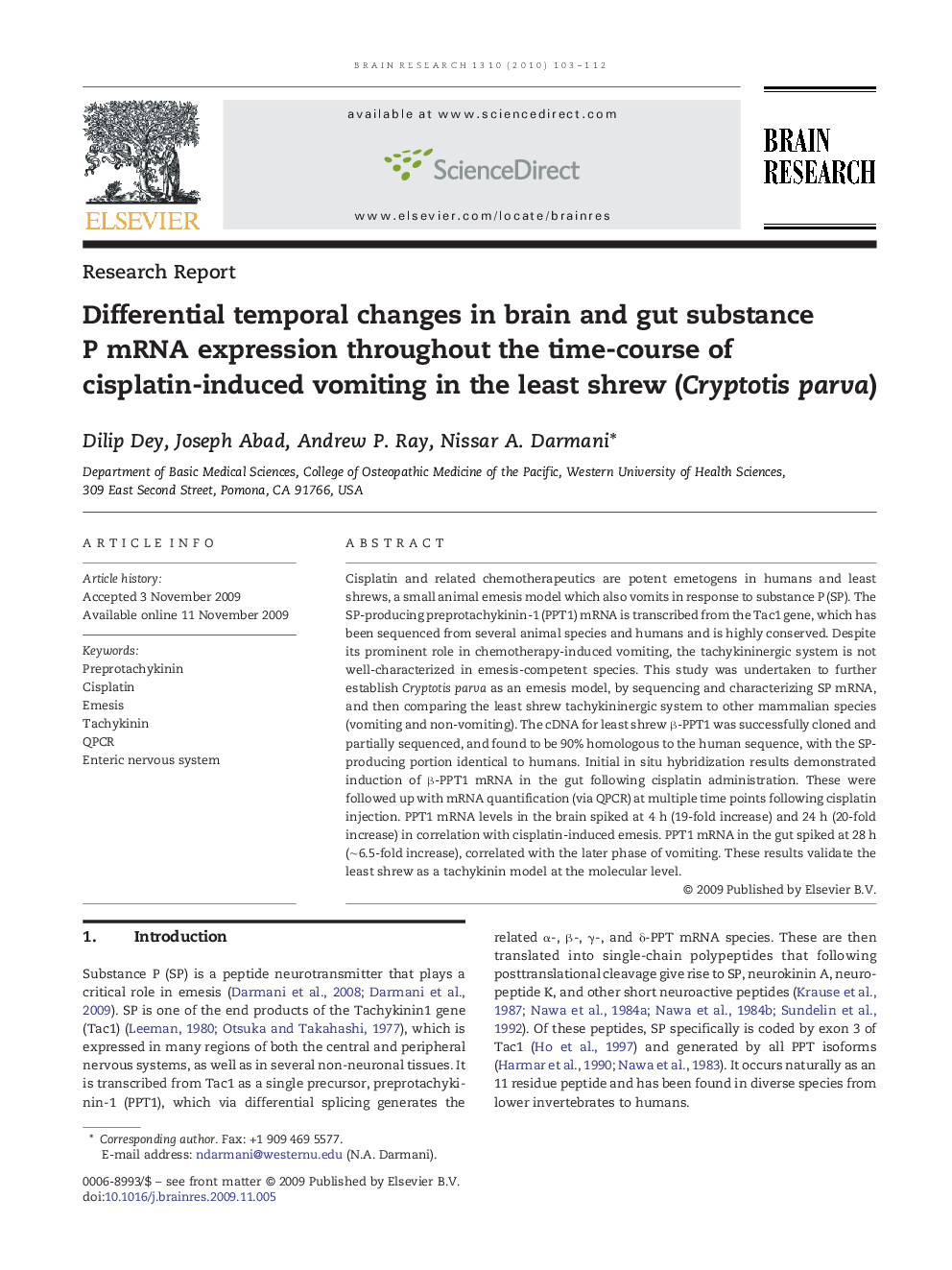| Article ID | Journal | Published Year | Pages | File Type |
|---|---|---|---|---|
| 4327404 | Brain Research | 2010 | 10 Pages |
Cisplatin and related chemotherapeutics are potent emetogens in humans and least shrews, a small animal emesis model which also vomits in response to substance P (SP). The SP-producing preprotachykinin-1 (PPT1) mRNA is transcribed from the Tac1 gene, which has been sequenced from several animal species and humans and is highly conserved. Despite its prominent role in chemotherapy-induced vomiting, the tachykininergic system is not well-characterized in emesis-competent species. This study was undertaken to further establish Cryptotis parva as an emesis model, by sequencing and characterizing SP mRNA, and then comparing the least shrew tachykininergic system to other mammalian species (vomiting and non-vomiting). The cDNA for least shrew β-PPT1 was successfully cloned and partially sequenced, and found to be 90% homologous to the human sequence, with the SP-producing portion identical to humans. Initial in situ hybridization results demonstrated induction of β-PPT1 mRNA in the gut following cisplatin administration. These were followed up with mRNA quantification (via QPCR) at multiple time points following cisplatin injection. PPT1 mRNA levels in the brain spiked at 4 h (19-fold increase) and 24 h (20-fold increase) in correlation with cisplatin-induced emesis. PPT1 mRNA in the gut spiked at 28 h (∼6.5-fold increase), correlated with the later phase of vomiting. These results validate the least shrew as a tachykinin model at the molecular level.
